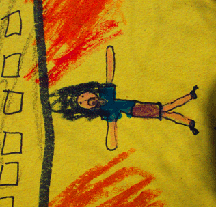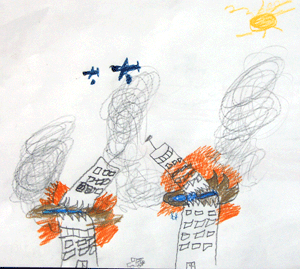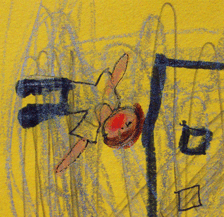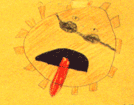

|
| TRAUMA, TERROR & TREATMENT PTSD in Children and Adults Treatment for post-traumatic stress disorder, including assessment, sandplay, play therapy, and verbal therapy techniques, psychopharmacology, and strategies for therapist self-care by
|
This course meets the qualifications for 10 hours of continuing education
| Is there anyone among us who is not affected by the horrifying events of September, 11, 2001? We have seen again and again the images of the World Trade Center in Manhattan being attacked. In the first image, the tower is on fire. Then we see the plane plunge through the second tower. Images haunt us of people falling or jumping from the burning tower . One news report tells of a couple, holding hands, jumping to their deaths. I can't help but ask myself, "What would I do?" Would I rather die by fire or falling? People running, screams and sirens. The news cuts to Washington DC, the Pentagon has been hit. Another plane hijacked, crashing in Pennsylvania. Heading where? Then the next horrifying scenes of first one, then the other, tower imploding. What had marked the New York skyline is gone, forever. Who did this? Why did this happen? What will happen next? Every sense is impacted..the sounds of screams and sirens. The sensation of horror, in the gut. The smoke and dust in the air. The smell of burning bodies and buildings. Death and destruction. In our mouths, the taste of the soot, the smoke, the strangled cries. The physical sensation of horror, in every cell. For those not eyewitnesses, but who are watching the TV, the images again and again of the towers being hit, the planes, the fire, the bodies falling, the implosion/explosion. The horror, the horror. And now there is war. Bioterrorism. Government officials predict a 100% chance of another terrorist attack. Fear, anxiety and depression flood the national psyche. The sense of safety is shattered. Children and adults are on edge, living in terror, sleepless and shaken. Heartbroken. How do we as therapists hold this trauma, for ourselves, our families, our clients and the psyche of the nation? How do we facilitate healing? Where do we put our own feelings of shock? horror? rage? disconnect? revenge? |

Terrorism now joins shooting in schools, earthquakes, firestorms, floods, hurricanes, kidnappings, sexual abuse, rape, physical abuse, drive-by shootings, war, car accidents as a part of life in the United States...the list seems endless as to what can cause trauma in children and adults. The world is not feeling very safe. This course will look at trauma, and the diagnosis of Post Traumatic Stress Disorder (PTSD) with emphasis on both immediate, helpful interventions, and how to deal with the long-term effects of trauma.

Martin, age 9
This course will provide a model for treating trauma in children and adults, focusing on how trauma lives in the cells, and how a present time event can trigger seemingly resolved feelings of vulnerability, grief and rage from the past. We will explore how to treat trauma, and the interventions, including play therapy and art, that sometimes must precede words. Treatment of adults and children will be discussed, as well as interventions,immediately following the traumatic event, that perhaps can decrease the subsequent development of PTSD. In addition, there are extensive links dealing with the treatment of trauma.

Table of Contents
Introduction
1. Immediately After the Traumatic Event
Strategies and Interventions immediately after the trauma that can help diminish the subsequent development of Post Traumatic Stress Disorder (PTSD)
This section includes information from the Federal Emergency Management Agency (FEMA) and the International Critical Incident Stress Foundation, Inc. (ICISF)
2. How to Assess for Impact
Features of this part include factors which allow a therapist to assess who will potentially be the most impacted by a disaster.
3. After the Disaster
This part of the course includes a Children's Mental Health Checklist, signs for identifying at-risk children, and includes links for handouts for patients from the American Red Cross in 12 different languages
4. An Elemental Model of Treatment
This model follows the research that memories of trauma live in the senses and the cells, and that words come later. The elements of Earth, Air, Fire and Water are used in therapy to express and heal trauma at the cellular level. The Elemental Model combines elements of play therapy, sandplay therapy and the Tibetan Buddhist chakra system, which believes that 'all illness is a matter of the heart' and that healing can only happen by descending down to the root of the pain.
5. Psychopharmacology
A section on psychopharmacology of PTSD, with suggestions on which medications are the most helpful for specific symptoms.
6. Spirit
How do we go on? How do we, as therapists holding so much pain, care for ourselves, so that we can care for others? This section looks at Compassion Fatigue, includes practical suggestions, and has on on-line support group available to therapists.
Interspersed in each section are links, vignettes, sandplay images and children's art. While some of the clinical material used focuses on September 11, 2001, the cases and model presented are applicable to many different types of trauma, including natural and manmade disasters, sexual and physical abuse, severe illness and injury, and other types of trauma.
| Learning objectives for Terror, Trauma & Treatment
|

Carol, age 9
This
course meets the qualifications for 10 hours of continuing education
maintains responsibility for the program. |
We do adhere to the American Psychological Association's Ethical Principles of Psychologists. Our courses are carefully screened by the Planning Committee to adhere to APA standards. We also require authors who compose Internet courses specifically for us follow APA ethical standards. Many of our courses contain case material, and may use the methods of qualitative research and analysis, in-depth interviews and ethnographic studies. The psychotherapeutic techniques depicted may include play therapy, sandplay therapy, dream analysis, drawing analysis, client and therapist self-report, etc. The materials presented may be considered non-traditional and may be controversial, and may not have widespread endorsement within the profession. www.psychceu.com maintains responsibility for the program and its content. |
|
888-777-3773